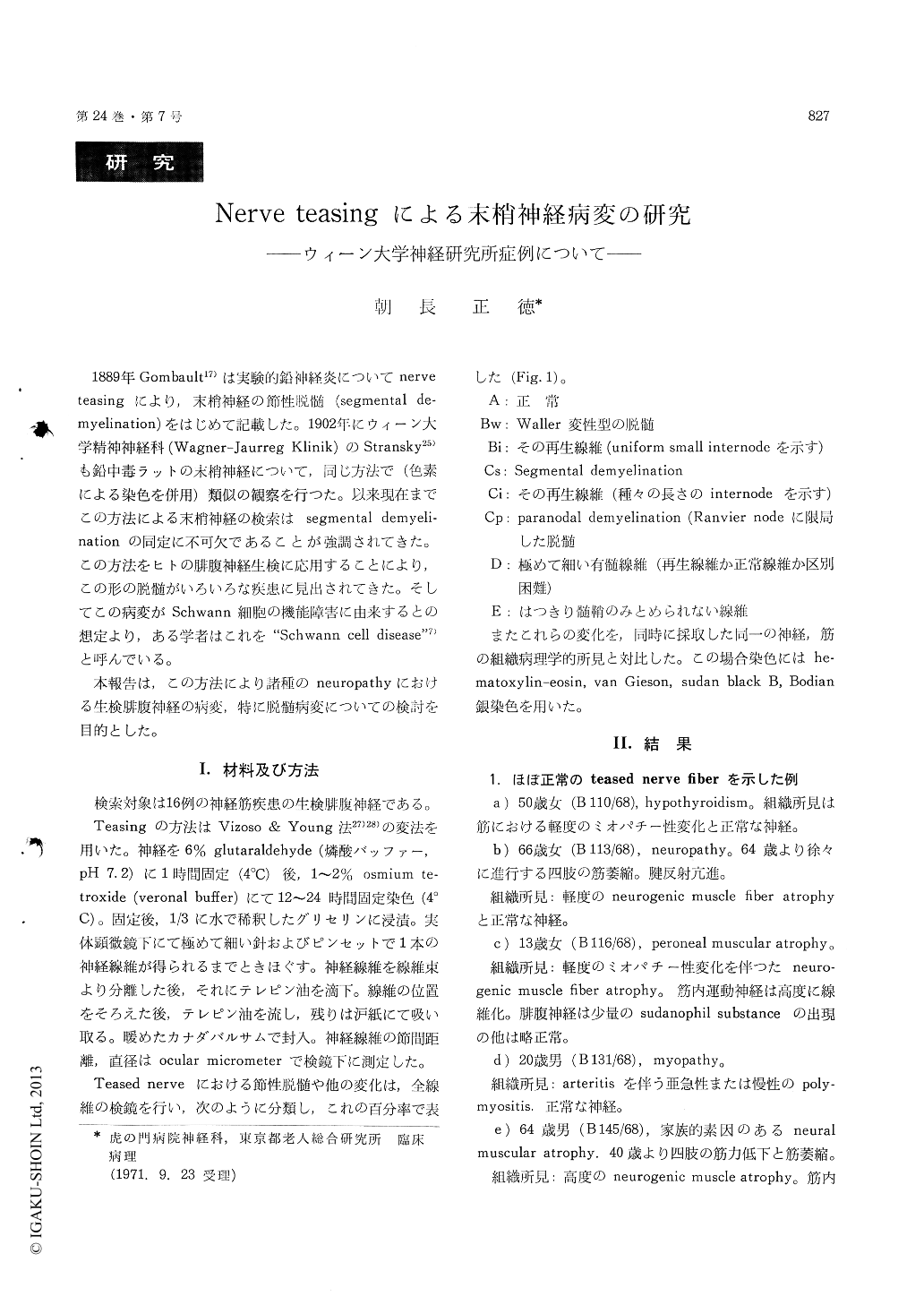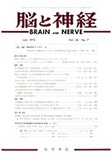Japanese
English
- 有料閲覧
- Abstract 文献概要
- 1ページ目 Look Inside
1889年Gombault17)は実験的鉛神経炎についてnerveteasingにより,末梢神経の節性脱髄(segmental de—myelination)をはじめて記載した。1902年にウィーン大学精神神経科(Wagner-Jaurreg Klinik)のStransky25)も鉛中毒ラットの末梢神経について,同じ方法で(色素による染色を併用)類似の観察を行つた。以来現在までこの方法による末梢神経の検索はsegmental demyeli—nationの同定に不可欠であることが強調されてきた。この方法をヒトの腓腹神経生検に応用することにより,この形の脱髄がいろいろな疾患に見出されてきた。そしてこの病変がSchwann細胞の機能障害に由来するとの想定より,ある学者はこれを"Schwann cell disease"7)と呼んでいる。
本報告は,この方法により諸種のneuropathyにおける生検腓腹神経の病変,特に脱髄病変についての検討を目的とした。
Sural nerves from sixteen cases with various neuropathies were examined by fiber teasing method. Five of them showed normal findings, another five nerves could not be teased, because of their very strong demyelination in almost all fibers. They showed, however, almost intact axons with histological examination. Other seven cases revealed various features of myelin sheath changes of axonal degeneration type, or of segmen-tal demyelination, paranodal demyelination and remyelination. Some teased nerves revealed distinct alteration in about half of fibers, although usual histological observation showed only slight changes, that is, teasing method is very sensitive to catch the early changes of nerves.
Various features of segmental demyelination, including that of metachromatic leukodystrophy, peroneal muscular atrophy, paraproteinemia were demonstrated. The relationship between segmental demyelination, axonal demyelination and the onion-bulb formation was discussed.

Copyright © 1972, Igaku-Shoin Ltd. All rights reserved.


